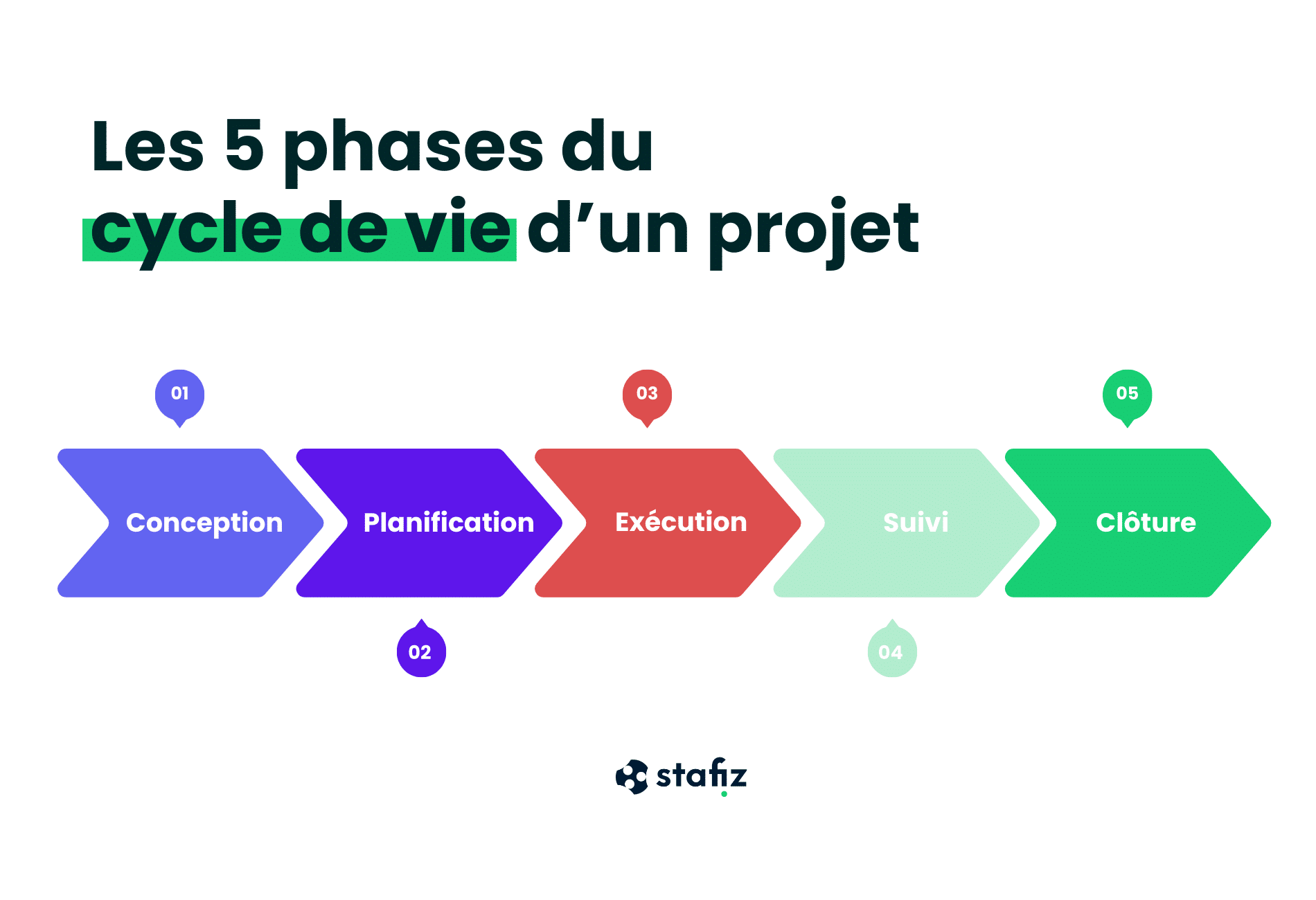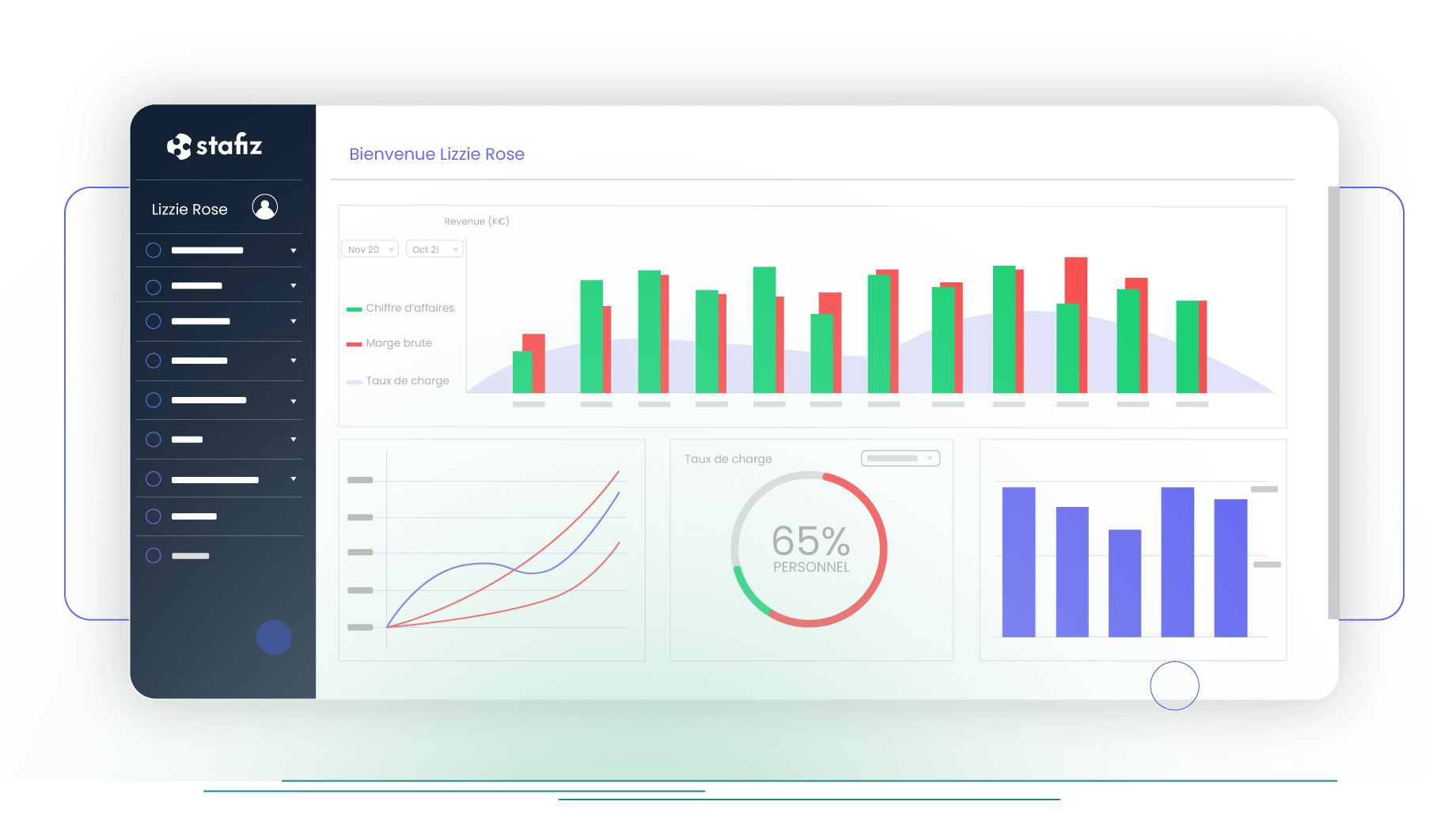The 5 phases of project management

Managing a project is like guiding an orchestra. To obtain a beautiful symphony and achieve its objectives, rigor and precise planning are required.
Project management is presented as a multi-step organization, and rightly so: managing a project is indeed a delicate task. Breaking it down into several steps makes it easier to organize, and ensures that no detail is overlooked.
Its size doesn't matter: whether a project is fast-paced and light in terms of tasks to be produced, or more substantial and resource-intensive, you need to integrate these phases into your project methodology . The reason we organize project management into several phases is because it is extremely complex.
These different phases makes up what is known as the project life cycle. There are five main phases, but these can be adjusted to four or six, depending on your company's methodologies and habits.

All phases of a project's lifecycle need to be planned in advance, so that you can build its foundation. This gives you greater visibility over the course of the project, making it easier to monitor and manage any risks or unforeseen events.
For the progress monitoring phase, it is then imperative to ensure that all objectives are met. Create a work structure for each phase, make sure the requirements are met, conduct a review at each stage of the project. To simplify the task, you need to use software. A project management tool like Stafiz can make your job a lot easier, thanks to its intuitive interface, automation and collaborative features!
Once the project has been launched , make sure to always work with the relevant team directly before embarking on the next phase of the project. You can then re-evaluate their performance. The project team and the project manager have the same motivations: to achieve the project objectives.
Budget monitoring of projects, in anticipation
See Stafiz in action in 2 minutes
Phase 1: Project Design
At this step, the project starts to shape conceptually. This is when it's time to define the project's properties and scope of action. The first step is to create an overview of the project, in order to select the strategies to adopt in order to achieve the expected results.
The project manager should engage with stakeholders and customers to understand the importance of the project's goals.
After this meeting, you can already start creating a project dashboard. The idea is to create something similar to a project map, which will make it easier to understand the fundamental objectives.
Just as a task can be broken down into several subtasks, each phase of the project is organized into several stages. In the case of project planning, the following four axes can guide you.
- Conduct a feasibility study: this variable concerns the evaluation of the objectives, schedule and cost of the project (to check if they can be achieved). To achieve the expected results of the project, it is important to be able to create a balance between the requirements and the resources used.
- Define the scope of the project: This involves identifying the project objectives, expected deliverables, deadlines, tasks and cost analysis. Find out what needs to be done to accomplish this project and what still needs to be done. By doing this, you will be able to define – or discover – the boundaries of the project.
- Project deliverables: this part involves identifying the scope of the work required and its form. Based on the statement of work (which describes the project's work requirements, schedule, invoicing schedule, what's acceptable and what isn't), instructions for deliverables' medium and their quantity will then be clearly defined for the completion steps.
- Create a business case: once all the above steps have been completed, start creating your business case. This can serve as a Proof of Concept: it demonstrates why the project is essential, and what financial benefits can be acquired from the outset.

Preparation Phase – Project Management
Phase 2: Project planning
Once you've got the investors' approval, create a plan that everyone can follow. Build a tasks schedule, and assign them to team members, setting deadlines for each tasks.
« Failure to plan is planning to fail. » Therefore, planning is the most important phase in the project life cycle. It's not the most exciting part of the project, and it's true that planning can be a bit daunting. However, it is crucial to your project's success.
Again, this phase can itself be divided into several stages.
Create a project plan
It should serve as a guide for project managers on how to produce quality results, manage risk, but also to help them keep the cost within budget.
It also helps to assess the value of the project, and to help teams complete their tasks within a given time frame.
Create a resource plan
This plan should provide you with the necessary number of resources required to complete this project. That is:
- the number of project managers;
- the number of workers;
- the number of raw materials.
This also includes essential project management techniques and information technology (IT).
Gathering the necessary resources
After creating the plan, gather all the other resources such as capital, equipment, workspace, etc. Have someone monitor resources and replenish them if needed.
One Solution of resource planning can take over a lot of these tasks and help you better allocate your resources.
Plan the financial budget
Based on the resources required, you can then forecast your financial costs budget. Create a detailed cost analysis with:
- the performing cost of each task;
- the cost for the whole team to carry out a task;
- provide a safety margin for any unforeseeable expenses.
Risks and obstacles
Even when a great deal of planning is done, risks are part of the mix. Try to take a proactive approach by thinking about the different types of obstacles and risks you may face during the project so that you are ready when they arise.
Putting a percentage of your risk in the financial budget as an expense, this provides you with security and will prevent the failure of your project.
The Stafiz platform allows for monitoring and controlling in project management in order to create detailed production plans whether that be on customer projects or internal projects. Plan your entire budget: pre-staff specific collaborators or groups and integrate your expenses, purchases, and subcontracting operations.
Phase 3: Project execution

Dashboard – Project management
This is the moment when everything that has been planned takes shape and becomes concrete. During this phase, project managers distribute project tasks to teams and allocate resources.
But remember: success depends on how well the planning phase has been structured! For even more efficiency, project managers can keep a checklist to ensure that stakeholder requests are taken into account and respected, as agreed in the business case.
It's important to learn from your mistakes, but also from your successes. A vital aspect of the project execution phase is to keep track of what caused the project to fail or succeed. In this way, you will be able to progress.
To do this, different metrics must be tracked:
- objectives;
- performance reports;
- project status updates;
- the need for human resources.
Project Progress Report
During the execution phase, there are a series of data updates as the project progresses and the expenditures to the resources committed. This is why it is necessary to maintain regular updates on what is happening and identify critical issues in the project.
Find out how Greenworking optimised its project monitoring with Stafiz!
Schedule regular interviews with stakeholders and the project team
We recommend that you update your reports for stakeholders and customers. See with them if the project is still moving in the right direction, and communicate with your team to give them your feedback and suggestions for improvements, especially on topics such as understanding customer needs or moving the trajectory forward to ensure that objectives will be met.
Phase 4: Project monitoring
This phase of the project takes place at the same time as the execution phase. It can be easily done using ERP software or a project management tool.
This step aims to measure that all parameters, such as budget, plans, and timelines, align with the project plan.
The project manager must ensure that the quality of production, scope drift, and resources are always within the projected project budget . If everything has been planned according to plan, the project manager should be able to anticipate possible risks and prevent them from occurring. Keep the project going, despite the obstacles!
Make your projects more profitable! With the Stafiz platform, gain visibility into your costs and resources in real time and easily compare them to the initial plan thanks to indicators and reports.
To find out more about project management and task automation:
Phase 5: Project Close-Out
After the successful completion of the project, communicate the results to the stakeholders and hand over the project to them.
On the internal side, take stock with your team members and learn from any mistakes that may have been made. Learn how to make adjustments for future projects (better manage your teams, allocate your resources wisely, plan better, etc.).
Don't forget to congratulate your team and show them appreciation for the hard work they've done. This will help the team achieve better results in future projects.
Analyze team performance
- Check the quality of the work and the results obtained.
- Suggest room for improvement.
- Compare performance with previous projects to see how it has been able to increase.
Write project documentation
Write a detailed document outlining how stakeholder expectations were met. By explaining what strategies and different phases were put in place to achieve these goals, it gives you food for thought, and allows for a retrospective understanding of how events unfolded.
Review the budget
Finally, see if the project was carried out in accordance with the allocated budget. Evaluate whether the costs and benefits are in line with the original plan. Look for opportunity costs that might have been overlooked during the project.
Project management can sometimes feel overwhelming. There are a lot of tasks that include risks, problems, and failures. To succeed in your projects, it is essential to follow the five steps mentioned above.
To take your project to the next level, you can also equip yourself with an IT tool that takes care of each phase of the project life cycle. This ensures that you save time, better manage your resources, and make the complexity of projects easier to organize.
To learn more about the Stafiz platform, don't hesitate to request a personalized demo!

